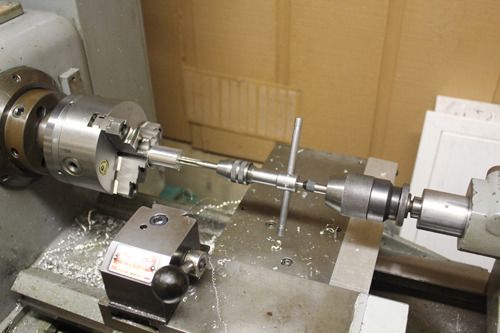Alright so I'll keep this short and sweet. I am taking on a project where I have to drill and tap 675, #4-40, 1/8" deep, blind holes in 6061 aluminum. Since I can't afford a proper CNC mill I am making do with my 1/2hp drill press and grizzly hand tapping tool. I'm not a professional by any means but I do hope to get there eventually  .
.
My questions are namely in regards to the best type of drill bit and tap for this job, and how long I can reasonably expect my tools tools to last.
1: What is the best type of drill bit to use for my application? Thus far I have been using #43, TiN coated drill bits.
2: What would be the best style and finish tap to use for 1/8" deep holes by hand?
For a long while I was using bright finish thread forming taps(with appropriate size drill bit) in aluminum. I switched over too using a TiN coated, spiral fluted tap midway through my last project to great results. Much easier cutting and clears chips remarkably well. WD-40 was used for lubrication.
3: Is there a good way to calculate the useful lifespan of my cutting tools like the drill and tap?
Thank you very much for your time and expertise, it is very much appreciated.
 .
.My questions are namely in regards to the best type of drill bit and tap for this job, and how long I can reasonably expect my tools tools to last.
1: What is the best type of drill bit to use for my application? Thus far I have been using #43, TiN coated drill bits.
2: What would be the best style and finish tap to use for 1/8" deep holes by hand?
For a long while I was using bright finish thread forming taps(with appropriate size drill bit) in aluminum. I switched over too using a TiN coated, spiral fluted tap midway through my last project to great results. Much easier cutting and clears chips remarkably well. WD-40 was used for lubrication.
3: Is there a good way to calculate the useful lifespan of my cutting tools like the drill and tap?
Thank you very much for your time and expertise, it is very much appreciated.



